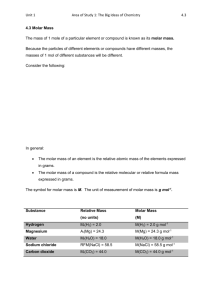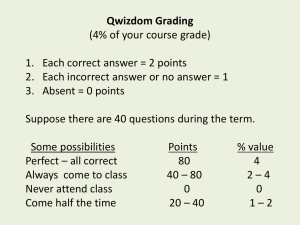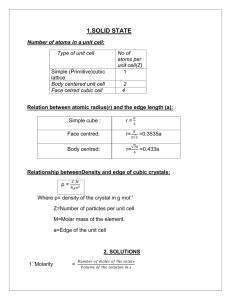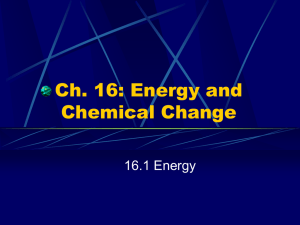Supplementary Information Arginine 122 and Asparagine 111 Play a
advertisement
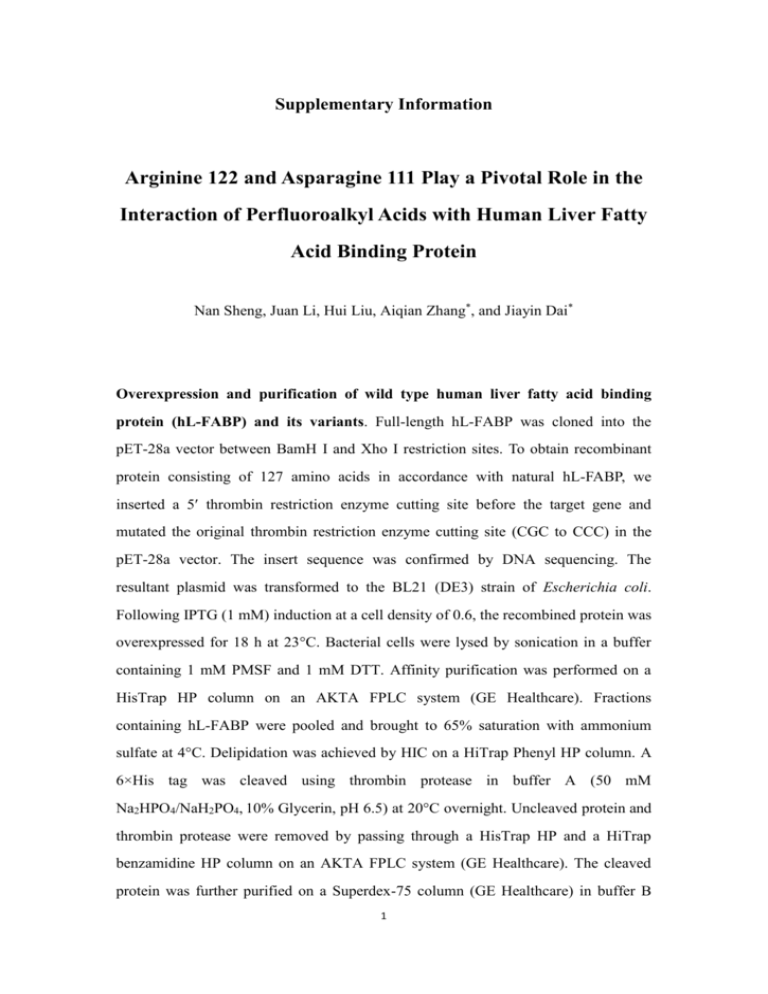
Supplementary Information Arginine 122 and Asparagine 111 Play a Pivotal Role in the Interaction of Perfluoroalkyl Acids with Human Liver Fatty Acid Binding Protein Nan Sheng, Juan Li, Hui Liu, Aiqian Zhang*, and Jiayin Dai* Overexpression and purification of wild type human liver fatty acid binding protein (hL-FABP) and its variants. Full-length hL-FABP was cloned into the pET-28a vector between BamH I and Xho I restriction sites. To obtain recombinant protein consisting of 127 amino acids in accordance with natural hL-FABP, we inserted a 5 thrombin restriction enzyme cutting site before the target gene and mutated the original thrombin restriction enzyme cutting site (CGC to CCC) in the pET-28a vector. The insert sequence was confirmed by DNA sequencing. The resultant plasmid was transformed to the BL21 (DE3) strain of Escherichia coli. Following IPTG (1 mM) induction at a cell density of 0.6, the recombined protein was overexpressed for 18 h at 23°C. Bacterial cells were lysed by sonication in a buffer containing 1 mM PMSF and 1 mM DTT. Affinity purification was performed on a HisTrap HP column on an AKTA FPLC system (GE Healthcare). Fractions containing hL-FABP were pooled and brought to 65% saturation with ammonium sulfate at 4°C. Delipidation was achieved by HIC on a HiTrap Phenyl HP column. A 6×His tag was cleaved using thrombin protease in buffer A (50 mM Na2HPO4/NaH2PO4, 10% Glycerin, pH 6.5) at 20°C overnight. Uncleaved protein and thrombin protease were removed by passing through a HisTrap HP and a HiTrap benzamidine HP column on an AKTA FPLC system (GE Healthcare). The cleaved protein was further purified on a Superdex-75 column (GE Healthcare) in buffer B 1 (20 mM Na2HPO4/NaH2PO4, 5% glycerin, pH 7.4). The protein was concentrated using 3 kDa Amicon® Ultra Filters (Millipore). Protein concentration was determined by the bicinchoninic acid method. Fluorescence binding assays. Fluorescence emission spectra were measured on a Horiba Fluoromax-4 spectrofluorometer (Edison, NJ, USA) in buffer C (50 mM Tris-HCl, pH 8.0) at room temperature under steady-state conditions. Fluorometric titrations of 1,8-ANS into hL-FABP and PFAAs displacement were performed as described previously (Carbone and Velkov, 2013), with an adjustment in protein concentration (0.25 M). The binding of 1,8-ANS to hL-FABP was monitored by measuring the fluorescence signal between 410 and 550 nm following excitation at 392 nm. The binding of various ligands to hL-FABP was measured by the displacement of bound 1,8-ANS from the protein. Briefly, hL-FABP (0.25 M, 100 l) in buffer C was allowed to equilibrate with 1,8-ANS (12.5 M) for 2 min prior to fluorescence measurements. Freshly prepared PFAA in buffer C (10 l) was added into the hL-FABP-1,8-ANS sample (90 l) and incubated for 2 min before the fluorescence intensity was measured. The displacement of the protein-bound probe was calculated from the decrease in fluorescence intensity with increasing concentrations of PFAA. The maximal fluorescence emission plot for 1,8-ANS was conducted to obtain Kd probe (dissociation constant) using GraphPad Prism V5.0 (GraphPad software, San Diego, CA, USA). The competition curves for PFAAs were fitted with a sigmoidal model (OriginLab, Northampton, MA, USA) to derive an IC50 value. The inhibition constant (Ki ligand) values for PFAAs were calculated according to the equation: IC50 ligand/[Probe]total = Ki ligand/Kd probe Where Kd probe is the measured Kd for 1,8-ANS obtained in the direct binding assay, and [Probe]total is the total concentration of 1,8-ANS. Supplementary Tables and Figures Table legends: Table S1: Effect of PFAAs on the relative proportion of the secondary structure 2 components of WT hL-FABP and its four variants as determined by CDa. Table S2: Concentrations of hL-FABPs and PFAAs for ITC experiments. Table S3: Thermodynamic parameters for the binding of PFHxS to wild type hL-FABP and its four variants as determined by ITC at 25°C. Figure Legends Figure S1. CD spectra of different concentrations of PFAA added to 5 μM WT hL-FABP and its four variants (S39G, M74G, N111D, and R122G) respectively. (A) PFHxA; (B) PFHxS; (C) PFNA. Figure S2. (A) (a) Fluorescence emission spectra of 0.25 M WT hL-FABP titrated with increasing concentrations of 1,8-ANS. Arrow indicates increasing concentrations of 1,8-ANS (0~15 μM). (b) Linear plot of the binding curve for 1,8-ANS. (B, C) Relative fluorescence intensity of 12.25 M 1,8-ANS in 0.25 M hL-FABP and its variant (S39G and M74G) as a function of added PFAA concentrations. (A) PFOA; (B) PFNA. Values represent means ± S.E., n = 3. Figure S3. ITC profiles for the binding of PFAA to WT hL-FABP and its four variants (S39G, M74G, N111D, and R122G) at 25°C. (A) PFHxA; (B) PFHxS; (C) PFNA. Figure S4. Structure of the active site in LFABP (PDB ID: 3STK). Pictured are the key amino acids surrounded by the buried active pocket within a distance of 5Å. (A), outer binding site occupied with PFOA; (B), inner binding site occupied with PFOA. The hydrogen bonds are shown by green dashed lines. Oxygen, fluorine, nitrogen and carbon atoms are displayed in red, green, blue, and black, separately. Figure S5. ITC profiles for the binding of OA to WT hL-FABP and its four variants. 3 Table S1. Effect of PFAAs on the relative proportion of the secondary structure components of WT hL-FABP and its four variants as determined by CDa. PFAAs (μM) WT PFHxA PFOA M74G N111D R122G α-helices β-sheet α-helices β-sheet α-helices β-sheet α-helices β-sheet α-helices β-sheet (%) (%) (%) (%) (%) (%) (%) (%) (%) (%) 17.1 50.3 16.9 50.4 16.6 51.2 17.5 49.1 15.3 51.5 10 17.3 50.8 16.9 50.7 16.7 50.9 17.4 49.3 15.3 51.7 50 18.2 50.0 17.3 50.7 16.9 50.8 17.6 49.3 15.3 51.4 10 17.2 50.2 17.1 50.2 16.5 51.0 17.5 48.8 14.9 51.8 50 17.2 50.3 17.1 49.8 16.4 50.8 17.6 50.3 15.2 51.6 10 17.0 48.5 17.1 50.0 16.7 50.9 17.7 48.9 15.3 51.1 50 17.1 47.1 17.3 48.9 16.8 49.7 18.0 48.4 14.9 51.3 17.7 47.6 17.8 47.2 17.4 48.4 18.5 47.2 15.5 49.5 10 17.1 49.3 17.0 49.7 16.7 50.6 17.5 48.6 15.2 51.2 50 17.6 48.3 17.6 49.1 17.0 49.4 18.1 48.7 15.1 50.5 18.4 47.4 18.3 48.0 18.0 48.3 18.5 47.1 15.1 50.8 No PFAAs PFHxS S39G 20 0 PFNA 20 0 a All data were determined by adding various concentrations of PFAA (μM) to 5 μM hL-FABP in 20 mM NaH2PO4/Na2HPO4 (pH 7.4). 4 Table S2. Concentrations of hL-FABPs and PFAAs for ITC experiments. Complex PFOA: hL-FABP PFNA: hL-FABP Protein Ligand (μM) (mM) WT/S39G/M74G 100 1.3 13 R122G 100 0.65 6.5 N111D 50 2 40 WT/S39G/M74G 100 1.3 13 R122G 100 0.65 6.5 N111D 25 1 40 50 0.65 13 50 0.75 15 100 1.3 13 Proteins [PFOA]/[ protein] WT/S39G/M74G/ PFHxA: hL-FABP N111D/R122G WT/S39G/M74G/ PFHxS: hL-FABP N111D/R122G OA: hL-FABP WT 5 Table S3. Thermodynamic parameters for the binding of PFHxS to wild type hL-FABP and its four variants as determined by ITC at 25°C. N (sites) PFHxS Ka (M-1) Kd (M) ΔH (kJ/mol) ΔS (J/mol/deg) ΔG (kJ/mol) WT 0.987 ± 0.056 (3.01 ± 0.42) × 104 33.22 -44.38 ± 3.66 -63.1 -42.80 ± 5.24 S39G 1.02 ± 0.112 (2.05 ± 0.29) × 104 48.78 -73.62 ± 12.01 -164 -69.52 ± 16.11 M74G 1.12 ± 0.060 (3.00 ± 0.61) × 104 33.33 -4.37 ± 0.38 5.83 -4.52 ± 0.24 N111D 0.925 ± 0.081 (3.71 ±0. 57) × 104 26.95 -12.47 ± 1.47 47.7 -13.67 ± 0.28 R122G 0.421 ± 0.101 (1.63 ± 0.30) × 104 61.35 -101.70 ± 35.85 -260 -95.2 ± 41.35 6 A S39G WT hL-FABP 20 20 control 10 M PFHxA 50 M PFHxA 100 M PFHxA 15 15 control 10 M PFHxA 50 M PFHxA 100 M PFHxA 10 5 0 CD (mdeg) 10 CD (mdeg) CD (mdeg) 10 M74G control 10 M PFHxA 50 M PFHxA 100 M PFHxA 5 0 5 0 -5 -5 -5 -10 -10 200 210 220 230 240 200 250 N111D 20 230 240 200 250 210 220 230 240 250 wavelength (nm) control 10 M PFHxA 50 M PFHxA 100 M PFHxA 15 10 CD (mdeg) 10 CD (mdeg) 220 R122G control 10 M PFHxA 50 M PFHxA 100 M PFHxA 15 210 wavelength (nm) wavelength (nm) 5 0 5 0 -5 -5 -10 -10 200 210 220 230 240 200 250 wavelength (nm) 210 220 230 240 250 wavelength (nm) B WT L-hFABP 20 control 10 M PFHxS 50 M PFHxS 100 M PFHxS 15 M74G 15 control 10 M PFHxS 50 M PFHxS 100 M PFHxS 15 control 10 M PFHxS 50 M PFHxS 100 M PFHxS 10 5 0 CD (mdeg) 10 CD (mdeg) CD (mdeg) 10 S39G 20 5 0 5 0 -5 -5 -5 -10 -10 200 210 220 230 240 250 200 wavelength (nm) control 10 M PFHxS 50 M PFHxS 100 M PFHxS 15 CD (mdeg) 10 CD (mdeg) 220 230 240 250 5 0 R122G control 10 M PFHxS 50 M PFHxS 100 M PFHxS 15 10 5 0 -5 -5 -10 7 -10 200 210 220 230 wavelength (nm) 240 250 200 210 220 230 wavelength (nm) 200 210 220 230 wavelength (nm) wavelength (nm) N111D 20 210 240 250 240 250 8 C 15 10 CD (mdeg) 0 control 10 MPFNA 50 MPFNA 100 MPFNA 200 MPFNA 15 10 CD (mdeg) 5 control 10 MPFNA 50 MPFNA 100 MPFNA 200 MPFNA 20 control 10 MPFNA 50 M PFNA 100 MPFNA 200 MPFNA 10 CD (mdeg) M74G S39G WT hL-FABP 15 5 0 -5 5 0 -5 -5 -10 -10 -10 200 210 220 230 240 200 250 220 230 R122G N111D control 10 MPFNA 50 MPFNA 100 MPFNA 200 MPFNA 15 240 250 10 5 0 -5 5 0 -5 -10 -10 200 210 220 230 wavelength (nm) 240 250 200 210 220 230 wavelength (nm) Fig. S1 9 200 210 220 230 wavelength (nm) control 10 MPFNA 50 MPFNA 100 MPFNA 200 MPFNA 15 CD (mdeg) 10 CD (mdeg) 210 wavelength (nm) wavelength (nm) 240 250 240 250 A (b) WT hL-FABP 500000 WT hL-FABP 20 400000 1/(1-F/Fmax) Fluorescence Intensity (a.u.) (a) 300000 200000 15 10 5 100000 0 420 440 460 480 500 520 0 540 0 5 10 [ANS]/F/Fmax wavelength (nm) 15 B Relative Fluorescence (%) Relative Fluorescence (%) 120 S39G 100 80 60 40 20 0 M74G 100 80 60 40 20 0 -2 -1 0 1 2 3 -2 -1 0 1 2 3 log [PFOA] (M) log [PFOA] (M) C S39G WT hL-FABP 80 60 40 20 0 -2 -1 0 1 log [PFNA] (M) 2 100 M74G Relative Fluorescence (%) Relative Fluorescence (%) Relative Fluorescence (%) 100 80 60 40 20 0 -2 -1 0 1 log [PFNA] (M) 10 2 100 80 60 40 20 0 -2 -1 0 1 log [PFNA] (M) 2 Fig. S2 11 A Time (min) Time (min) 0 10 20 30 0 40 40 0 -0.20 -0.40 kcal mol-1 of injectant 0.0 -0.3 -0.6 -0.9 WT hL-FABP 0.0 0 -1.8 -2.4 1.0 1.5 2.0 2.5 Molar Ratio Time (min) 10 20 30 40 S39G 0.0 0 0.00 20 30 40 -0.20 -0.40 -1.2 0.5 10 0.00 kcal mol-1 of injectant kcal mol-1 of injectant Time (min) 30 cal/sec cal/sec cal/sec -0.10 -0.20 -1.0 -2.0 -3.0 0.5 1.0 1.5 2.0 2.5 Molar Ratio Time (min) 10 20 30 40 M74G 0.0 0.5 1.0 1.5 2.0 2.5 Molar Ratio 0.00 cal/sec cal/sec 20 0.00 0.00 -0.10 -0.05 -0.20 -0.10 kcal mol-1 of injectant kcal mol-1 of injectant 10 -0.40 -0.60 -0.80 0.0 N111D 0.5 1.0 1.5 2.0 Molar Ratio 0.00 -0.10 -0.20 R122G -0.30 2.5 0.0 0.5 1.0 1.5 2.0 2.5 3.0 Molar Ratio B Time (min) 0 10 20 40 0 40 0 -0.60 -0.90 -2.0 -4.0 -6.0 WT hL-FABP 0.0 0 0.5 1.0 1.5 2.0 Molar Ratio Time (min) 10 20 30 -2.5 -5.0 S39G -7.5 0 2.5 1 2 3 Molar Ratio 4 Time (min) 40 0 0.00 cal/sec 0.00 -0.30 -0.60 10 20 30 0.00 -0.30 kcal mol-1 of injectant kcal mol-1 of injectant 30 10 1220 30 40 cal/sec -0.60 -0.90 cal/sec 20 -0.40 kcal mol-1 of injectant -0.30 -0.30 10 0.00 cal/sec cal/sec 0.00 -0.15 Time (min) Time (min) 30 -1.20 -0.80 -1.0 -2.0 -3.0 M74G 0.0 0.5 1.0 1.5 2.0 Molar Ratio 2.5 13 C Time (min) 10 20 40 0 cal/sec 0.00 cal/sec Time (min) Time (min) 30 -0.30 -0.60 10 20 30 40 0.00 0.00 -0.20 -0.50 cal/sec 0 -0.40 -2.0 -4.0 WT hL-FABP -2.0 -4.0 S39G 0.0 0.5 1.0 1.5 2.0 2.5 Molar Ratio Time (min) 0 10 20 30 40 0.0 0.5 1.0 1.5 2.0 2.5 Molar Ratio Time (min) 0 10 20 30 40 0.00 cal/sec cal/sec 0.00 -0.15 -0.30 -0.5 -1.0 -1.5 N111D -2.0 0 2 4 6 Molar Ratio 8 kcal mol-1 of injectant kcal mol-1 of injectant -0.45 10 0.0 0.5 20 30 40 -1.00 -1.50 0.0 -0.40 -0.80 -1.20 0.0 -3.0 -6.0 R122G 0.0 0.5 1.0 Molar Ratio Fig. S3 14 kcal mol-1 of injectant 0.0 kcal mol-1 of injectant kcal mol-1 of injectant -0.60 0 0.0 -2.0 -4.0 M74G 1.0 1.5 Molar Ratio 2.0 2.5 Fig. S4 15 Time (min) 0 10 20 30 40 kcal mol-1 of injectant cal/sec 0.00 -0.02 -0.04 -0.06 -0.10 -0.15 -0.20 WT hL-FABP -0.25 0 1 2 3 Molar Ratio Fig. S5 16


